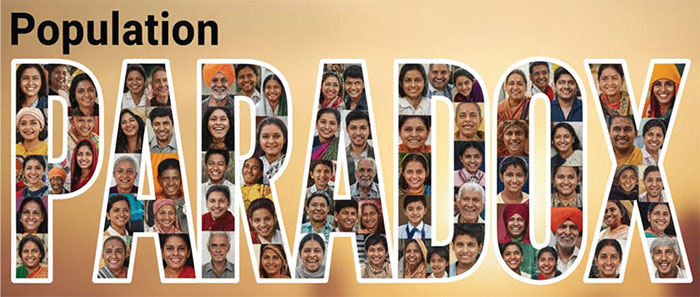India’s economic future is walking a demographic tightrope. The country still celebrates its youth bulge — one of the youngest populations on the planet — but that story is beginning to fray at the edges. Beneath the comforting averages lies a deep, uneasy split that could reshape how India grows, works, and governs itself.
The north and east are bursting with the young; the south and west are slowly growing old. The result is a widening imbalance that threatens to distort labour markets, strain public finances, and even upend the political calculus of the world’s largest democracy.
In the states of southern India, in Kerala’s quiet villages, Tamil Nadu’s industrial belts, or Telangana’s buzzing cities, one finds prosperity mixed with age. Fertility has dropped well below the replacement level of 2.1.
According to the Government’s National Family Health Survey (NFHS-5, 2019-21), Tamil Nadu now has a fertility rate of just 1.7 children per woman, Kerala 1.6, and Maharashtra 1.7. In these regions, families are smaller, education levels higher, and health indicators among the best in the country. The population is stabilising — but it is also greying.
In the north, however, the picture reverses. In Bihar, fertility still hovers around 3.0 children per woman; in Uttar Pradesh, India’s most populous state, it stands at about 2.4; in Jharkhand, 2.3; and in Madhya Pradesh, 2.0.
The average family remains large, schools are crowded, and millions of young people are stepping into the labour market each year with few jobs waiting for them. The United Nations’ World Population Prospects 2024 underscores the scale of this divergence: while southern states will start seeing population stagnation — even decline — before 2040, the Hindi heartland will continue to expand.
Uttar Pradesh alone is projected to add more working-age people in the next two decades than all of southern India combined.
This two-speed demographic economy is creating twin challenges. Advanced states like Tamil Nadu and Kerala, with ageing populations, will soon struggle to fill factories and service-sector jobs. Their dependency ratios — the number of dependents per working-age person — are rising, forcing governments to rethink everything from pensions to healthcare.
Poorer northern states, meanwhile, must confront the opposite problem: too many young people and too few opportunities. The Economic Survey 2022–23 warned that this imbalance could reshape the national development agenda, compelling richer states to transfer more resources to their younger, poorer counterparts.
The numbers tell a story of both promise and peril. The UN and World Bank estimate that nearly 68 per cent of Indians now fall within the working-age bracket of 15 to 64 — one of the highest ratios in the world. Yet that average conceals two diverging Indias.
In Kerala and Tamil Nadu, the proportion of working-age people has already peaked; within a decade it will begin to fall. In contrast, Uttar Pradesh and Bihar will see their working-age shares rise until at least 2040.
According to research by the Centre for Policy Research, Uttar Pradesh alone could see more than 20 million additional people joining the labour force by then, even as the south witnesses a gradual contraction.
For India, the stakes are immense. If its northern states can harness their demographic momentum through education, healthcare, and job creation, they could power national growth just as the southern states once did. But if opportunities lag behind aspirations, the result could be social unrest, mass migration, and deepening economic inequality. The south, on the other hand, may find its factories short of hands but its cities full of retirees.
Migration may become the economic bridge between the two Indias. Already, tens of thousands of workers from Bihar, Jharkhand, and Uttar Pradesh travel each year to the factories of Tamil Nadu or the construction sites of Kerala and Karnataka.
As demographic gaps widen, this internal migration could become the single most important factor holding India’s labour market together. Yet it will also test social cohesion, as linguistic, cultural, and political frictions emerge between migrant-receiving and migrant-sending states.
Fiscal policy, too, will have to adapt. India’s system of federal transfers — which allocates funds partly based on population — has already stirred tension between states that have controlled fertility and those that haven’t. Southern leaders argue they are being “penalised for performance,” while northern states insist they need greater support to educate and employ their surging youth.
As the next Finance Commission revisits its formula, this demographic divide could become a central fault line in centre–state relations.
The challenge, then, is not merely economic but political. Demography determines where India’s workers will come from, where its savings will accumulate, and where its votes will be cast. Uttar Pradesh and Bihar, with their growing populations, will continue to expand their weight in Parliament and national politics, while the south’s relative influence declines. Managing that shift without eroding the federal balance will require political skill of a rare order.
India’s demographic story is no longer one of sheer numbers but of contrasts — between ageing prosperity and youthful precarity, between labour shortages and joblessness, between fiscal surpluses and social strain.
Whether the country can convert this divide into a dynamic equilibrium will decide the fate of its much-touted demographic dividend.



